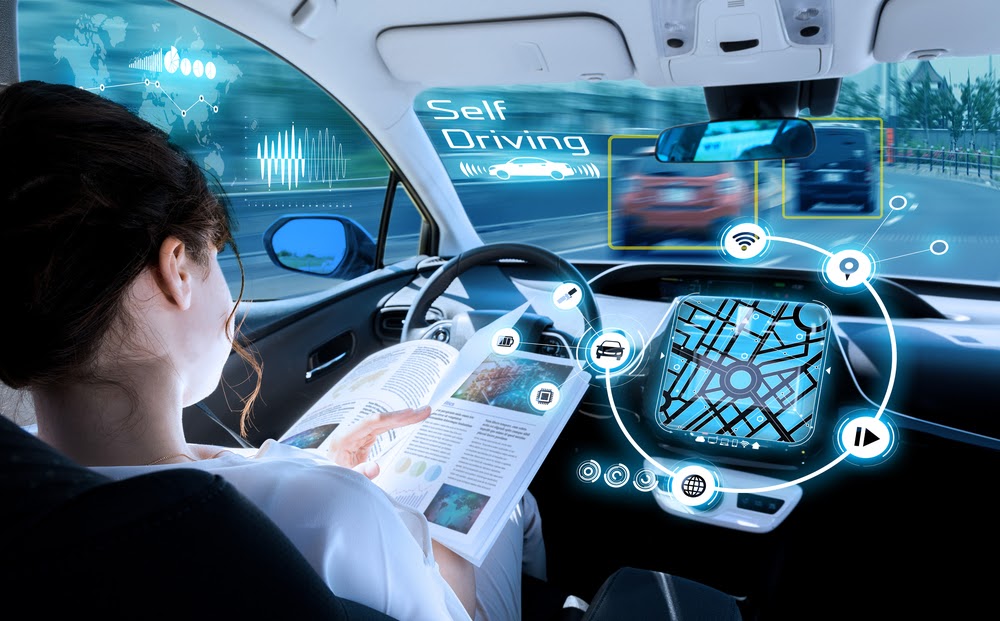Modern vehicles were first built in Germany in the late 1800s. However, the Ford Model T, which was introduced in 1908, was the first mass-produced vehicle that people could actually afford to buy. This is why Henry Ford, the founder of Ford Motor Company, is often referred to as the father of the automotive industry.
The automotive industry has come a long way since the days of the Ford Model T. Throughout the decades, the industry has evolved in response to changes in consumer demand, innovative technologies, and safety and environmental concerns. But many experts believe that the biggest changes are yet to come.
Automotive experts believe that the industry will go through a transformation period over the next decade. What will inspire these changes and what should consumers expect? Here are the 7 trends that are set to shape the future of the automotive industry:

Autonomous Vehicles
In the past, a self-driving vehicle seemed like something you would see in a futuristic science fiction movie. But now, many experts believe that autonomous vehicles will have a major impact on the future of the automotive industry.
There are five different levels of autonomous driving. The lower levels are vehicles that still require a human driver even though they are designed with some autonomous features. There are many vehicles available today that fall into the category of level 1 or 2 automation. For example, Hyundai’s Highway Driving Assist system controls the vehicle’s steering and braking, but requires a human driver to have their hands on the steering wheel at all times.
In the future, though, experts believe that the roads will be filled with level five autonomous vehicles, which do not require a human driver.
The thought of self-driving vehicles may sound frightening, but the introduction of these vehicles could actually improve road safety. The National Highway Traffic Safety Administration (NHTSA) reports that 94% of all traffic accidents are caused by human error. In the future, autonomous vehicles could prevent these accidents, which could save thousands of lives per year.
Connectivity
In the automotive industry, the term “connectivity” refers to a vehicle’s ability to connect with the outside world. The three different types of car connectivity are:
- Car2Car: This refers to a car’s ability to send and receive data from other cars located nearby.
- Car2X: This refers to a vehicle’s ability to send and receive data from infrastructure such as traffic lights.
- Passengers: This refers to the passengers’ ability to connect with the outside world while traveling in a connected vehicle.
Experts predict that all three types of connectivity will be incorporated into the design of future vehicles, which would drastically transform the driving experience.
For example, in a fully connected vehicle, passengers would be able to connect to the internet to communicate, work, shop, or pass the time on their favorite websites.
Meanwhile, their vehicle would be able to connect with other vehicles and traffic infrastructure to collect important data about upcoming traffic, weather, or road hazards. The vehicle may discover that there is a car accident ahead that has slowed down traffic. Based on this information, the vehicle may decide to take another route to ensure the passengers can get to their final destination as quickly as possible.
These are just two examples of how connectivity could significantly improve the driving experience in the future.

Electric Vehicles
Electric vehicles already exist in today’s world. In fact, there are about 1.8 million electric vehicles registered in the United States. So far, the electric vehicle market has only experienced slow growth. However, experts predict that electric vehicles will dominate the automotive industry over the next decade.
There are a number of reasons why experts believe this will happen. First, experts predict that more governmental bodies around the world will pass legislation encouraging or requiring consumers to purchase electric vehicles.
In California, for example, Governor Newsom signed an executive order that phases out the sale of gas-powered vehicles in the state. Experts believe that legislation like this will pass in many other areas around the world in the future. This would leave consumers with no other choice but to purchase electric vehicles.
Experts also believe that electric vehicles will grow in popularity as charging stations become more available around the world. Many consumers are hesitant to go electric because they fear they won’t be able to find a charging station when they need to give their battery a boost. But now, these charging stations are popping up everywhere, which means consumers won’t need to worry about being inconvenienced by owning an electric vehicle.
If these predictions come true, the growth of the electric vehicle segment of the market will have a major impact on the future of the automotive industry.
Shift to Online
The vast majority of consumers are comfortable shopping for items online. However, until recently, the concept of buying a car online rather than at a dealership was practically unheard of. Then, the COVID-19 pandemic hit.
During the pandemic, dealerships were forced to temporarily close their showrooms. Even when the showrooms re-opened, many consumers felt it was safer to shop online for vehicles rather than visit dealerships in person. This resulted in an explosion of online vehicle sales. In fact, 30% of all new car sales were completed online in 2020.
Experts believe that this trend will not die off once the pandemic is over. Instead, they believe that it will redefine how consumers shop for vehicles and how automotive companies sell to consumers in the future.
Automotive manufacturers and dealerships must be willing to invest in the right tools to shift to online sales. They must also find ways to connect with and assist consumers as they move through the car buying process online. It may be challenging to make these changes at first, but in the long run, the automotive industry could benefit greatly from this trend.

Shared Mobility
In today’s uncertain world, many consumers are hesitant to make large purchases, including vehicles. These consumers are beginning to demand more flexibility from the automotive industry. Experts believe that the industry will respond in the years ahead by embracing shared mobility.
Vehicle-sharing is already available in a number of big cities in the U.S. Car-sharing companies offer consumers the chance to pick up a vehicle at a convenient location and use it for a short period of time. This allows consumers to enjoy the perks of having access to a vehicle without having to incur the costs of car ownership. In other words, consumers can use a vehicle whenever they need it without having to make a large financial investment or worry about maintenance, repairs, or insurance.
In the future, experts believe that this car-sharing model will grow in popularity and expand to other areas in the U.S. This could drastically change the automotive industry. If car-sharing becomes more popular, vehicle sales may decline in the future. A rise in car-sharing could also change how automotive manufacturers design, produce, market, and sell their vehicles.
Shorter Model Cycles
The term “model cycle” refers to the length of time that a specific vehicle model is produced before it is redesigned. Right now, model cycles are typically between five to eight years. This means most automotive manufacturers redesign a model after it has been sold for five to eight years. However, this could change over the next decade.
Experts believe that the model cycle in the automotive industry will shrink to one year. Instead of updating designs every five to eight years, automotive manufacturers will need to release new designs every year.
Why? According to experts, vehicles of the future will be autonomous and connected, which means they will be designed with incredibly sophisticated technologies. These advanced technologies will need to be updated far more frequently than the technologies used in vehicles today. In order to issue these updates, automotive manufacturers will need to drastically shorten their model cycles to one year.
New Entrants
Toyota, Ford, Honda, and several other manufacturers have dominated the automotive industry for decades. However, they may face some new competition in the future.
Experts predict that the changes in the automotive industry will make it easier for other companies to enter the market and compete with today’s major players. These experts believe that some of the competitors may come from the tech industry. Companies from this sector may enter the autonomous driving vehicle segment of the market.
Automotive consumers may view new competitors as edgy, innovative, and exciting, which could make it difficult for larger, established brands to compete with them. Established manufacturers may also face competition from Chinese car manufacturers, which have experienced an impressive growth in annual sales over the last few years.
New entrants could shake up the automotive industry and force established players to rapidly innovate in order to retain their customers.
Based on these predictions, the automotive industry may look very different in a decade. These trends could completely disrupt the industry and bring surprising changes for consumers and manufacturers alike.

